Negative Yields, Opportunity Cost and Gold
 This article was written by Dickson Buchanan, SchiffGold Precious Metals Specialist. Any views expressed are his own and do not necessarily reflect the views of Peter Schiff or SchiffGold.
This article was written by Dickson Buchanan, SchiffGold Precious Metals Specialist. Any views expressed are his own and do not necessarily reflect the views of Peter Schiff or SchiffGold.
Last week, I published an article on the causes and consequences of negative interest rates. In it, I talked briefly about how negative yields hold significant implications for gold as an asset class. In this followup article, I will explain why that is.
Capital and Negative Yields
Capital in waiting – capital sitting on the sidelines waiting for a good investment opportunity – typically gets parked in government bonds. This is true for a number of reasons. Bonds are less speculative compared to most assets. The only risks are a sudden rise in yields or a fall in the denominated currency if it’s a foreign bond. Of course, some governments and jurisdictions are less appealing than others, as anyone with exposure to Greek bonds will tell you.
Despite a less than perfect track record, government bonds are still considered the “risk free” asset. Setting aside whether they truly are“risk free” (they aren’t) they are certainly less risky than buying a stock, or trading a commodity or a piece of real estate. In the former two options you risk immediate price exposure with every tick, and in the latter, there are natural liquidity restraints. Additionally, the bond market is the only market big enough and liquid enough to absorb this kind of capital. If you are thinking about money in the bank, make no mistake, there are little to no physical cash reserves sitting in the bank. All the deposited funds are moved into another asset at the bank’s discretion within regulatory restraints.
With bonds, capital earns a small yield. Given the decade long trend in interest rates, the yield earned has been falling, falling and falling. Due to our modern monetary madhouse, we are now seeing negative yields. The following chart shows the yield curves for Japan and Germany from 3 months out to 15 years.
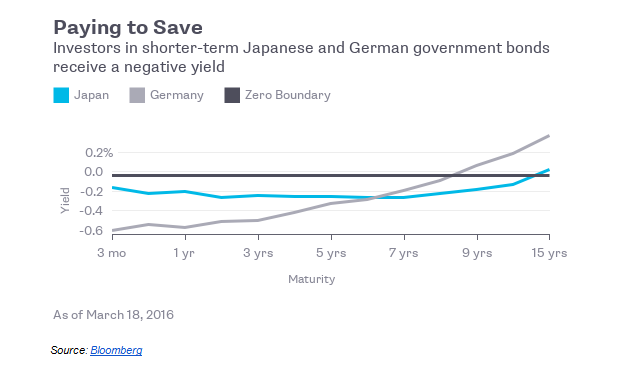
That’s not the worst of it. The 10-year Swiss Bond is currently trading at -0.338 yield. We will come back to this number later.
Gold and Negative Yields
As opportunities for yield in the marketplace decrease, capital in search of better opportunities must now consider the adverse effects of being charged a negative yield to play it safe. In such an environment, non-yielding assets, which at one point looked unattractive, will begin to look much more attractive compared to the negative yielding bonds.
What happens to be the largest non-yielding asset in today’s financial markets?
Gold is the largest non-yielding asset market today. The market for gold is deep enough and liquid enough to attract large amounts of capital under similar market conditions as government debt. However, unlike government debt, gold has no counterparty risk. Therefore, the true bearer of the title “risk free asset” should go to gold – not T-bills or whatever other names government paper has. This is because gold is liquid under all market conditions.
Of course, there is a cost to buy and store gold. But in our negative yield environment, if the cost of buying and storing gold is at par, or close to par, with the negative yield your capital would pay in a government bond, then we would expect a portion of that capital to flow into gold instead of the government bond.
Let’s revisit the 10-year Swiss bond yield of -0.338. If you were to consider putting $10 million in a 10-year Swiss Bond, you would be paying $33,800 to own that asset. If you could acquire gold bullion stored in the secure vault of a trusted third party for 0.25%, then your cost of allocating the same amount of capital only comes to $25,000. Simple alternative analysis shows that there will at least be some portion of capital that will opt for gold over the government debt. This is especially true in a post 2008, post Cyprus, post Greece financial arena. As we wrote in our previous article, in a negative rate environment banks may have to choose between the lessor of two negative rates. Gold offers a different and in many ways better bid on large amounts of capital that needs to parked and preserved for the future. .
It’s important to remember that this kind of optionality wasn’t on the minds of most people 10 years ago. But it is now a reality that many are facing. In fact, we expect the dynamic of capital flowing into gold to only gain momentum if yields continue to fall further into negative territory. Moreover, if any of the large government debt players go bust, like Japan for instance, then we would really expect large capital inflows to move into gold.
In summary, negative yields lower the relative opportunity cost of owning gold compared to other similar assets.
Get Peter Schiff’s most important Gold headlines once per week – click here – for a free subscription to his exclusive weekly email updates.
Interested in learning more about physical gold and silver?
Call 1-888-GOLD-160 and speak with a Precious Metals Specialist today!




 With the AI boom and green energy push fueling fresh copper demand, and with copper mines aging and not enough projects to match demand with supply, the forecasted copper shortage has finally arrived in earnest. Coupled with persistently high inflation in the US, EU, and elsewhere, I predict the industrial metal will surpass its 2022 top to reach a […]
With the AI boom and green energy push fueling fresh copper demand, and with copper mines aging and not enough projects to match demand with supply, the forecasted copper shortage has finally arrived in earnest. Coupled with persistently high inflation in the US, EU, and elsewhere, I predict the industrial metal will surpass its 2022 top to reach a […]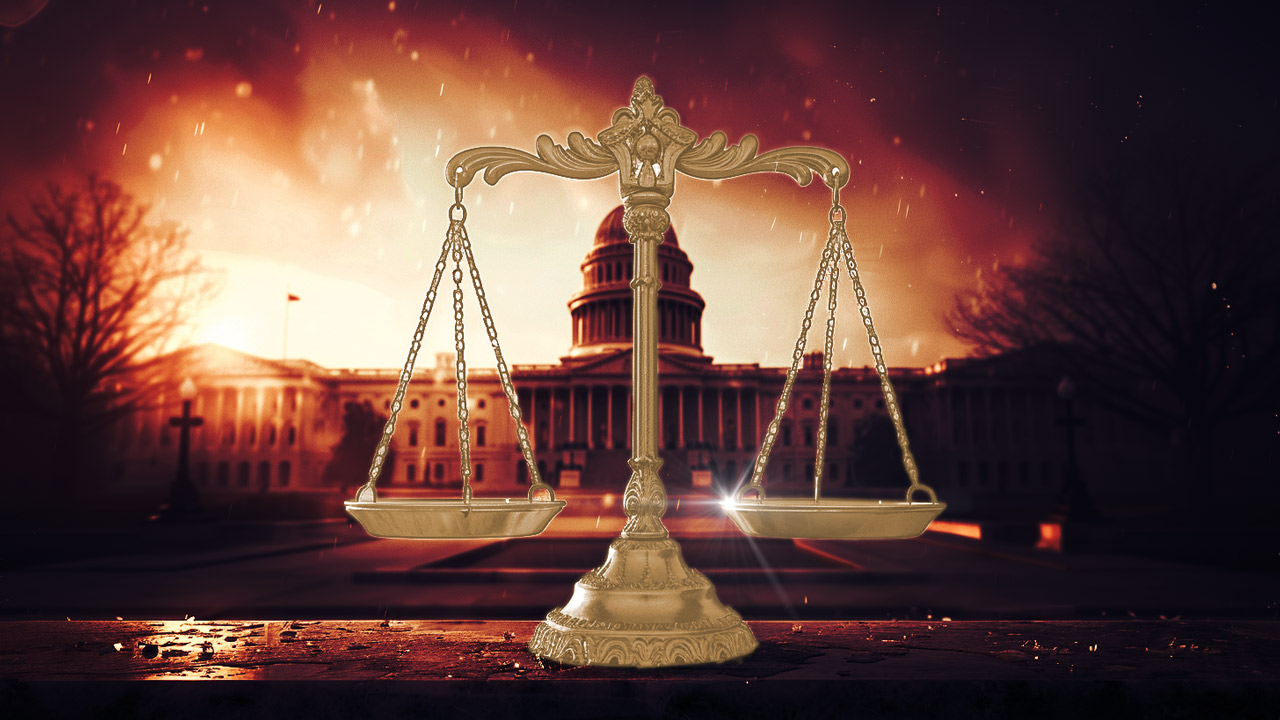 America’s trust in its institutions has rapidly eroded over the past 20 years. We have a lower level of trust in our judicial system and elections than most European countries. Some of this is natural, as Americans are uniquely individualistic, but much of it arises from repeated government failures.
America’s trust in its institutions has rapidly eroded over the past 20 years. We have a lower level of trust in our judicial system and elections than most European countries. Some of this is natural, as Americans are uniquely individualistic, but much of it arises from repeated government failures.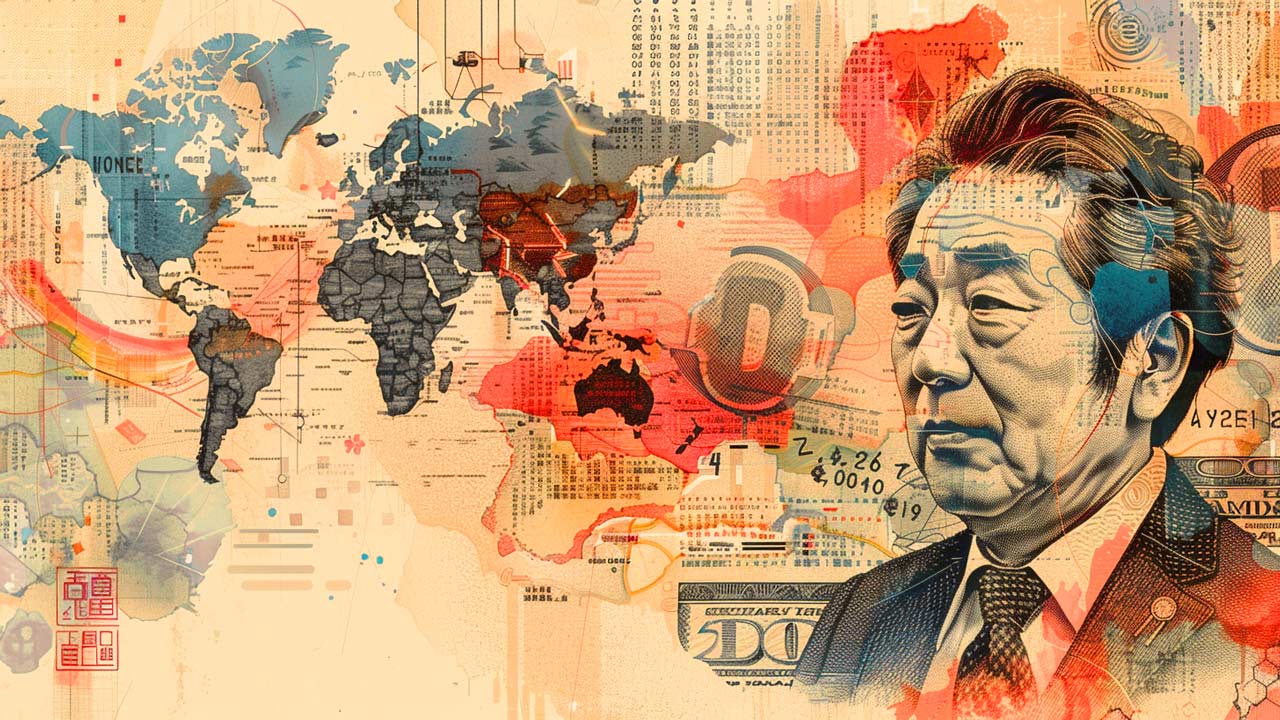 Decades of negative interest rate policy in Japan have ended. That could mean the end of the $20 trillion “yen carry trade,” once one of the most popular trades on foreign exchange markets, and a chain reaction in the global economy. The yen carry trade is when investors borrow yen to buy assets denominated in […]
Decades of negative interest rate policy in Japan have ended. That could mean the end of the $20 trillion “yen carry trade,” once one of the most popular trades on foreign exchange markets, and a chain reaction in the global economy. The yen carry trade is when investors borrow yen to buy assets denominated in […]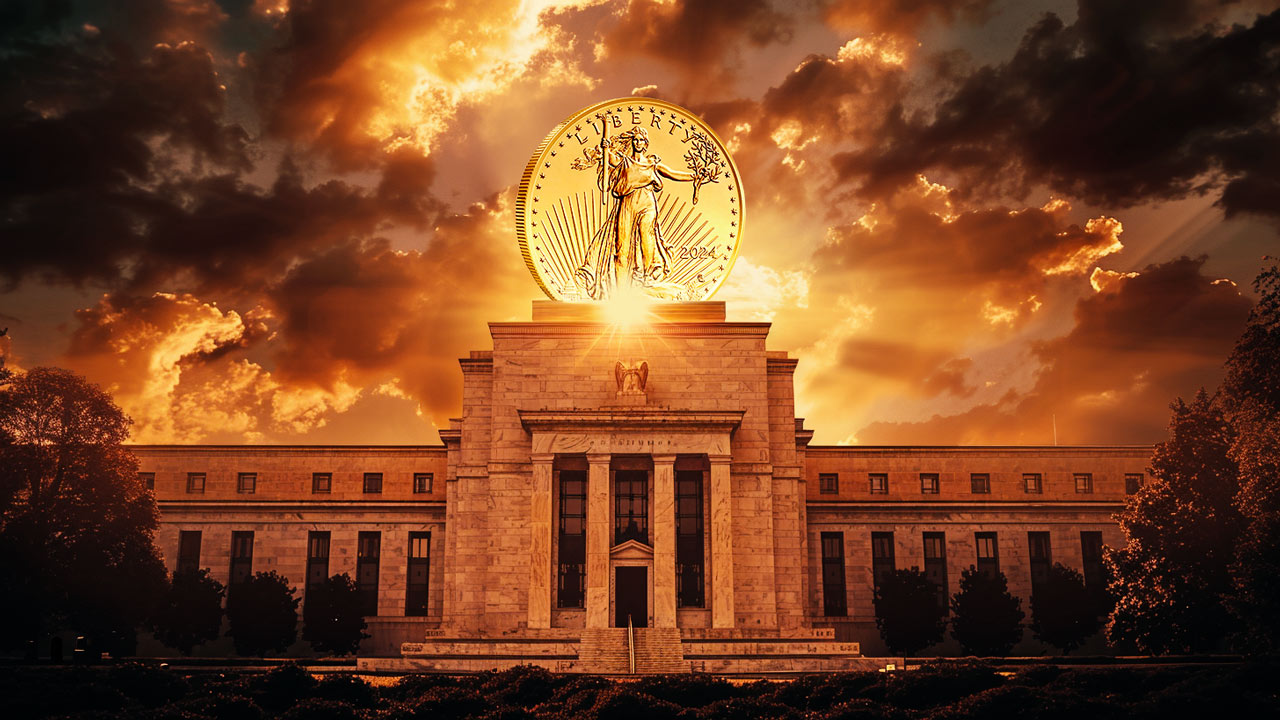 With a hot CPI report casting a shadow of doubt on the likelihood of a June interest rate cut, all eyes are on the Fed. But they’ve caught themselves in a “damned if they do, damned if they don’t” moment for the economy — and the news for gold is good regardless.
With a hot CPI report casting a shadow of doubt on the likelihood of a June interest rate cut, all eyes are on the Fed. But they’ve caught themselves in a “damned if they do, damned if they don’t” moment for the economy — and the news for gold is good regardless. 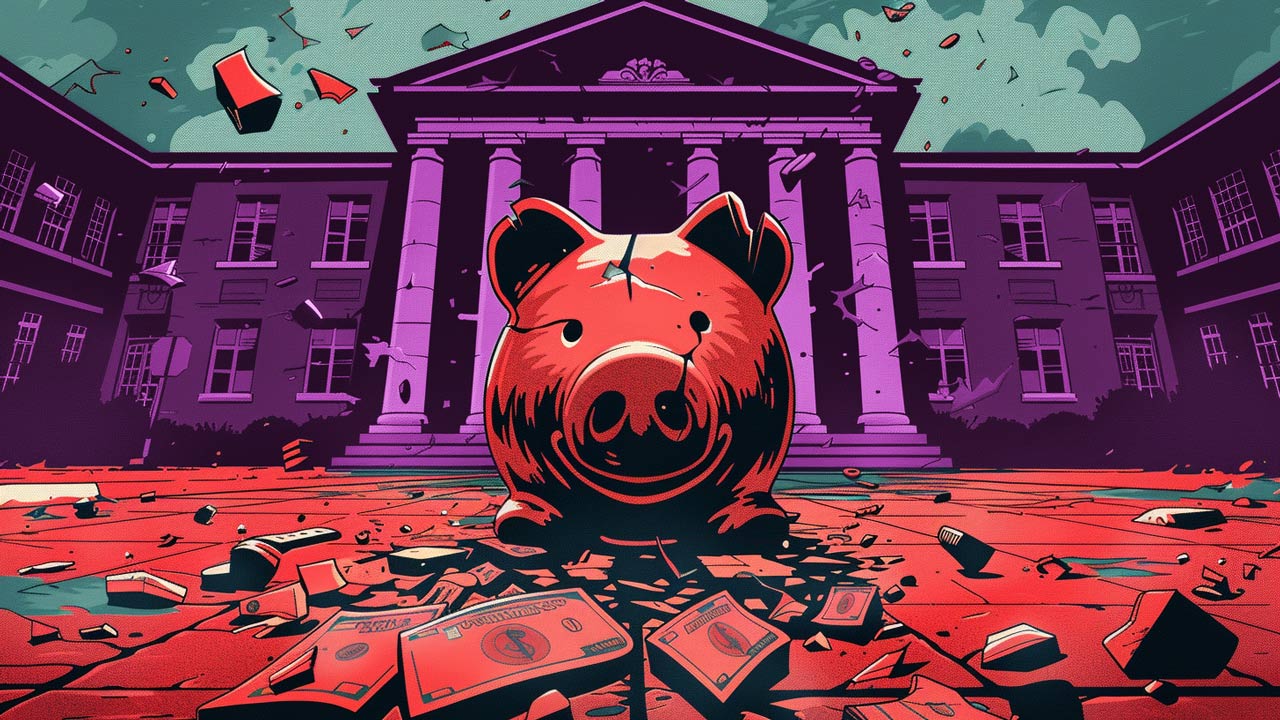 It’s no secret that the American public is wildly ignorant of many issues that are central to the success of our nation. Just a generation ago it would have been unthinkable that less than half of the American population could recognize all three branches of government. America is in most cases far less educated about its government […]
It’s no secret that the American public is wildly ignorant of many issues that are central to the success of our nation. Just a generation ago it would have been unthinkable that less than half of the American population could recognize all three branches of government. America is in most cases far less educated about its government […]
Hi. my name is john francix. i saw your advert online i now want to confirm mayb is a valid email or not because i want to purchase some golds thanks
What happens to my gold in a cashless society? How will I be able to buy necessities with gold or other metals when a system does not exist to use
them as money?
If that did exist I would buy all the gold and silver I possibly could. I own about 100 ounces if silver